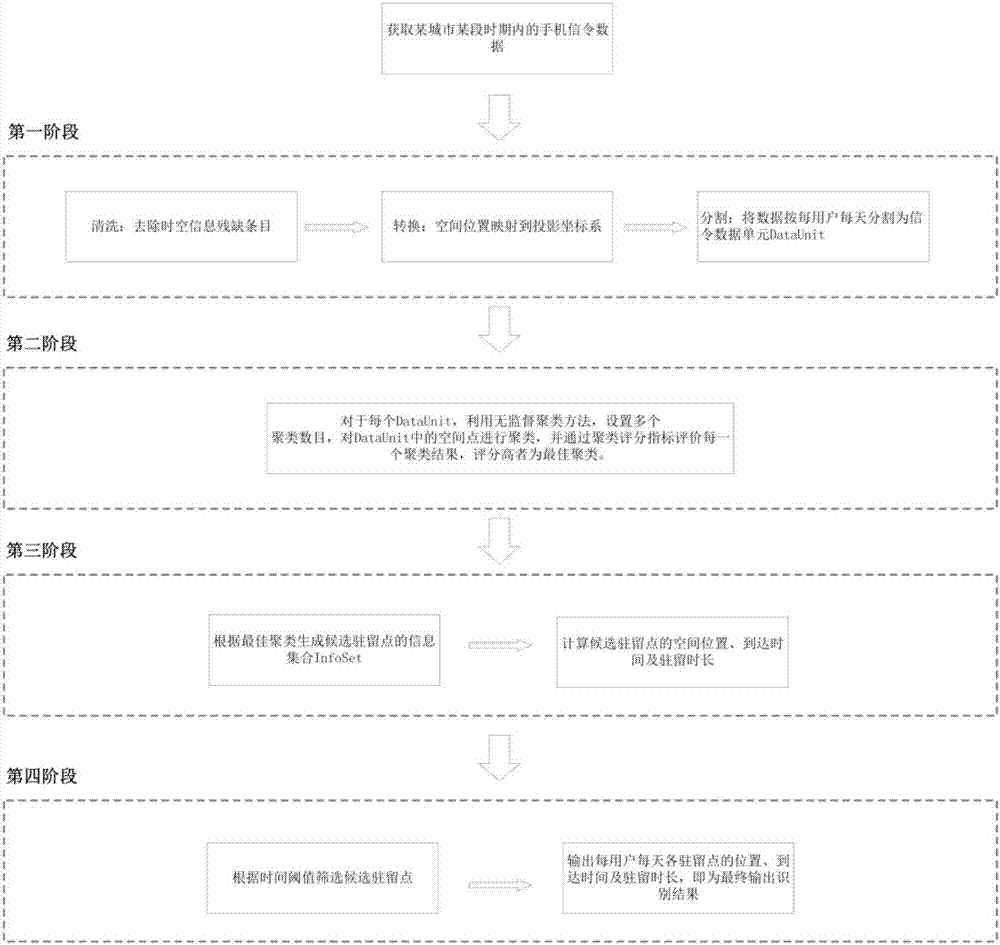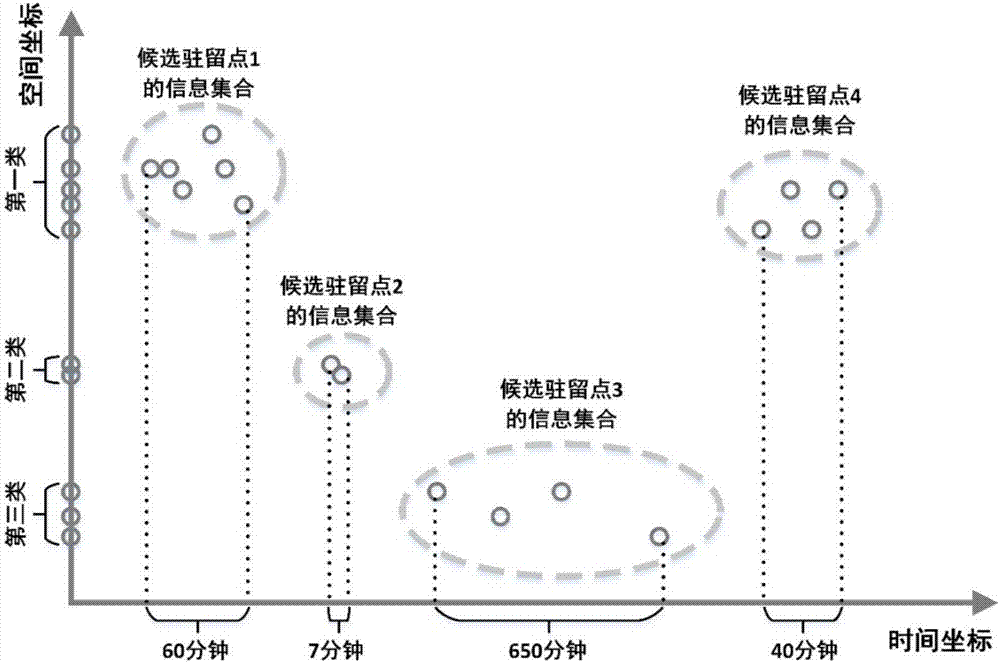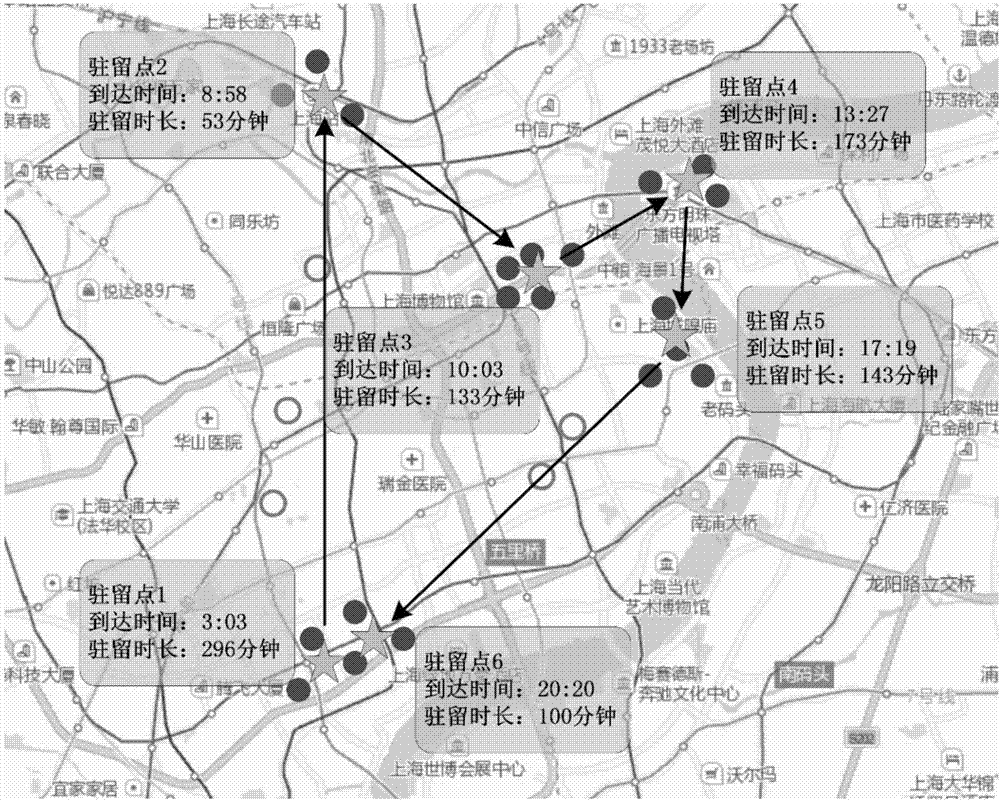Mobile phone signaling data-based user travel residence behavior identification method
A mobile phone signaling and identification method technology, applied in the field of large data, can solve the problems of increasing the workload of learning difficulty, the inability to take into account the accuracy of the identification rate of the residence point, and the compromise of the accuracy rate of the identification of the residence point, so as to achieve good scalability, Avoid compromises, use simple and convenient effects
- Summary
- Abstract
- Description
- Claims
- Application Information
AI Technical Summary
Problems solved by technology
Method used
Image
Examples
Embodiment Construction
[0031] Such as figure 1 As shown, a method for identifying a user's travel and parking behavior based on mobile phone signaling data includes the following steps:
[0032] (1) Clean, convert and segment mobile phone signaling data.
[0033] Cleaning: After obtaining the mobile phone signaling data in a certain period of time in the city, remove the record entries with incomplete temporal and spatial information.
[0034] Conversion: After obtaining the cleaned signaling data, replace the base station number in the signaling record with the corresponding base station space coordinates. If the spatial coordinates of the base station are latitude and longitude coordinates, it is also necessary to convert the latitude and longitude coordinates into projected coordinates. This patent does not have any dependence on the projected coordinate system, and international general projection methods can be selected, such as: Mercator projection, Gauss-Kruger projection, Lambert projectio...
PUM
 Login to View More
Login to View More Abstract
Description
Claims
Application Information
 Login to View More
Login to View More - R&D Engineer
- R&D Manager
- IP Professional
- Industry Leading Data Capabilities
- Powerful AI technology
- Patent DNA Extraction
Browse by: Latest US Patents, China's latest patents, Technical Efficacy Thesaurus, Application Domain, Technology Topic, Popular Technical Reports.
© 2024 PatSnap. All rights reserved.Legal|Privacy policy|Modern Slavery Act Transparency Statement|Sitemap|About US| Contact US: help@patsnap.com










